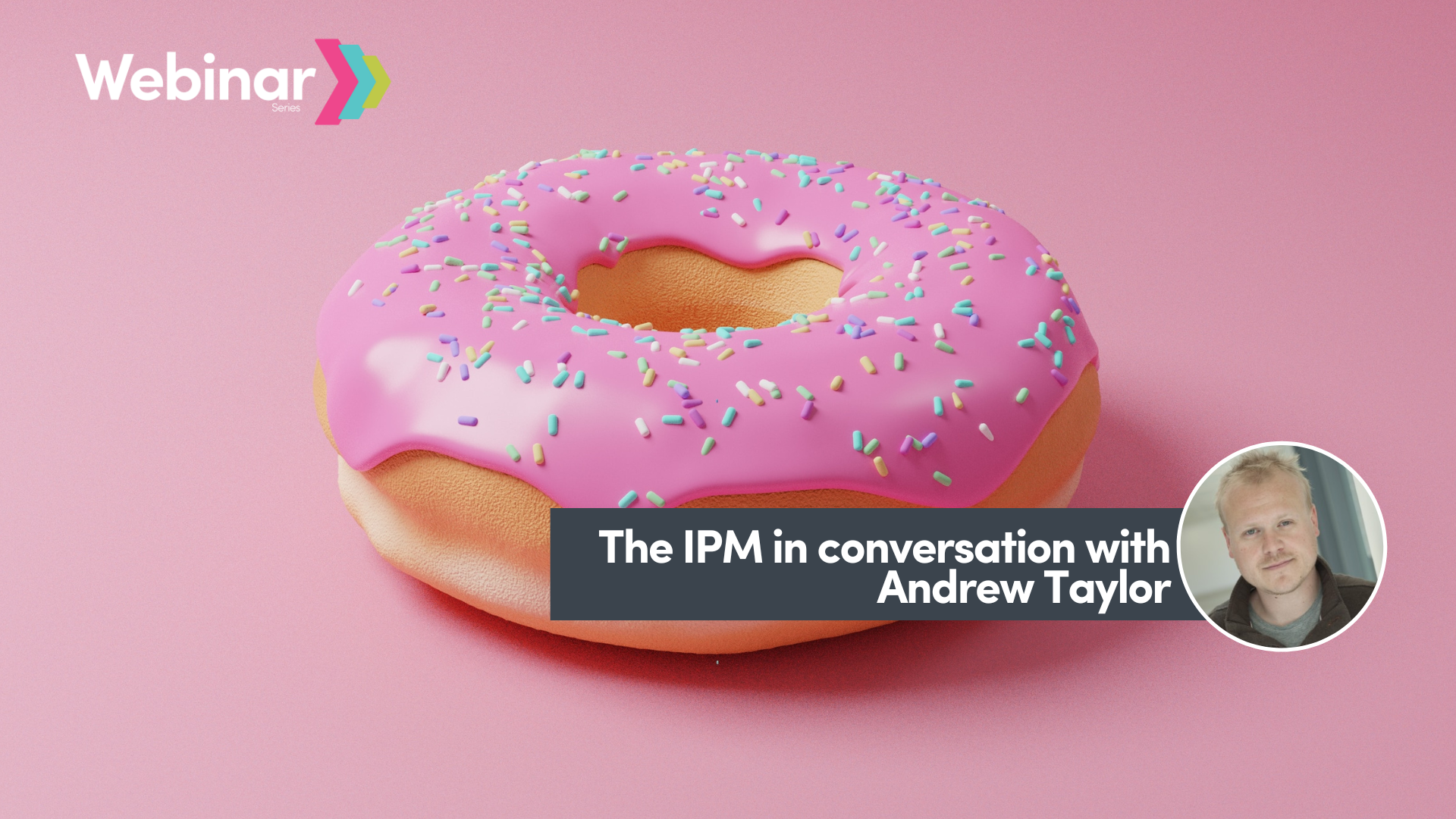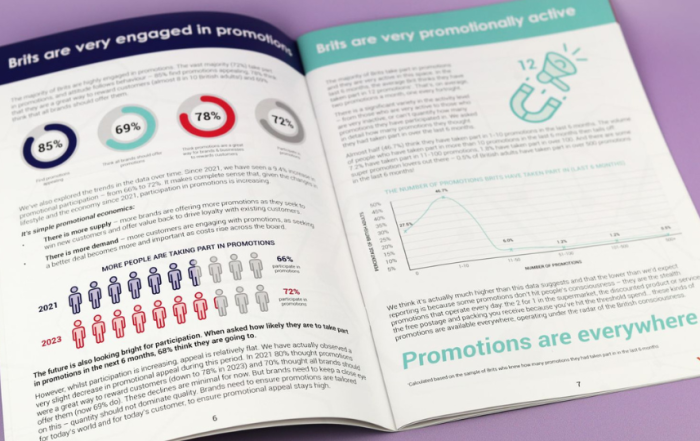
In conversation with Andrew Taylor CAP
UK’s Advertising Ban On Less Healthy Food & Drink (LHFD) Products
Regulatory authority Andrew Taylor sits down with the IPM to unpack the intricacies of the upcoming Less Healthy Food and Drink advertising ban.
20th September 2023
October 1, 2025, marks a new chapter for UK advertising as incoming regulations promise to reshape the promotional landscape of “Less Healthy Food and Drink” (LHFD) products. These regulations revolve around three core media platforms that form the backbone of many marketing strategies. The Institute of Promotional Marketing (IPM) and the Committee of Advertising Practice joined forces to review the forthcoming changes in legislation. This article summarises the key takeaways, offering a detailed overview of the policy and strategies marketers can adopt to navigate the tightening restrictions around the consumer food environment.
Three Media Platforms Set for Transformation
These new restrictions on the advertising of LHFD products are applicable to three media channels:
Ofcom Licensed Television Before 9 PM: Television broadcasts face a watershed restriction, effectively prohibiting the promotion of less healthy food or drink products between 5.30 am and 9.00 pm.
Ofcom Regulated On-Demand Program Services Before 9 PM: On-demand program services fall under the same watershed restriction, ensuring that less healthy products no longer entice viewers during peak viewing hours.
Paid Advertising Online: Comprehensive ban on the online placement of paid advertisements targeting UK users. This sweeping change recognises the widespread influence of digital platforms.
While these regulations pivot on the timing and placement of product promotions, it’s crucial to understand that the government’s concern lies in the visual presentation of these advertisements, particularly within the digital domain.
The Visual Distinction: Insights from Andrew Taylor
“The issue the government has identified is with the sort of visual presentation of ads, the sort of visual nature.”
In discussing the government’s perspective on these regulations, Andrew Taylor highlights the visual nature of the ban. He emphasises that advertisements featuring visual representations of LHFD products—such as the golden crust of a fried chicken piece, glistening with flavour, or the slow pour of caramel over a chocolate cake—will fall directly under the purview of these new rules. As these alluring images of focused portrayals of less healthy food and drink items are reported to lead consumers to often bypass critical nutritional evaluation.
“If you had, for example, a pizza box, the sort of generic pizza box, it can be branded but not ‘specifically’ branded… You can show someone opening the box and enjoying some steam coming off their pizza, things like that, but you cannot actually show the pizza, that it is the suggestion created in the viewer’s mind.”
While regulations cast a shadow on visual mediums, including television and online ads, audio-only platforms like podcasts, streaming services, and internet radio remain exempt from these restrictions. This underscores the importance of understanding the nuance in the way regulatory bodies perceive the impact of visual imagery compared to auditory messages. As the specified marketing channels face increasing scrutiny, marketers find themselves in a position to reimagine their messaging tactics, perhaps shifting their focus from the eyes of viewers to the ears of listeners. If leveraging audio isn’t feasible or strategically aligned, brands and agencies might pivot towards what Andrew Taylor defines as “non-identifiable product promotions.” This method utilises indirect suggestions and atmospheres to weave a bond with consumers. For example, a soda advertisement might show a group of friends enjoying a cold, fizzy drink on a sunny day, without ever showcasing the brand logo or mentioning the drink’s name. The emphasis is on the experience and emotion tied to the product rather than the product itself.
Identifiable LHFD Products
Identifiable products are those which explicitly display, name, or emphasise specific aspects of a product in a promotional context. For example, consider a YouTube advertisement where the narrator exclaims, “These ‘Sea Salt’ chips have such an irresistible crunch!” In this example, the messaging directly references the product, its specific flavour, and irresistible crunch, which clearly distinguishes the crisps from many other products. According to Andrew Taylor, if the advertisement is paid, marketers must refrain from referencing product details in this specific way and instead adopt a more generic approach. The emphasis being on the experience and emotion tied to the product rather than the product itself. However, organic promotions—those naturally shared on platforms like official websites or social media pages—are exempt from these restrictions. This differentiation can be a strategic linchpin when content planning provided the content also adheres to existing HFSS rules.
Q&A
How can companies safely direct traffic to Microsites?
What are the implications for Social Media?
Will this effect instore promotions?
Is this regulation likely to change?
With all eyes on 2025, the Less Healthy Food and Advertising Ban promises to bring about a significant transformation in the way LHFD products are marketed in the UK. These regulations, driven by concerns about public health and the influence of advertising, are set to affect major channels such as TV broadcasts, on-demand services, and online paid advertising. In the wake of these changes, brands and marketers are encouraged to re-evaluate their strategies, placing emphasis on overarching brand narratives as opposed to product-centric references. While paid advertisements undergo scrutiny, organic content on brands’ platforms remains relatively free, subject to HFSS regulations. As the landscape transforms, education and resources become indispensable. For the most recent guidance on this subject, find Ofcom’s latest announcement below.
For a comprehensive Ofcom Guide – Click Here to View
News
What Do Brits Want from Promotions in 2026
Get ready to unpack the promotional marketing landscape for 2026 as Mando, YouGov and the IPM prepare to launch What Brits Want from Promotions 3.0...
IPM Brings AI Marketing Debate to Westminster
AI in marketing goes on trial at the House of Commons, as MPs and industry leaders debate whether it is a partner or disruptor to promotional marketing.
Piccadilly Lights Goes from Billboard Icon to Experiential Capital
Piccadilly Lights, once the crown jewel of billboard advertising, is now the beating heart of experiential marketing in London, where brands don’t just advertise, they immerse.








